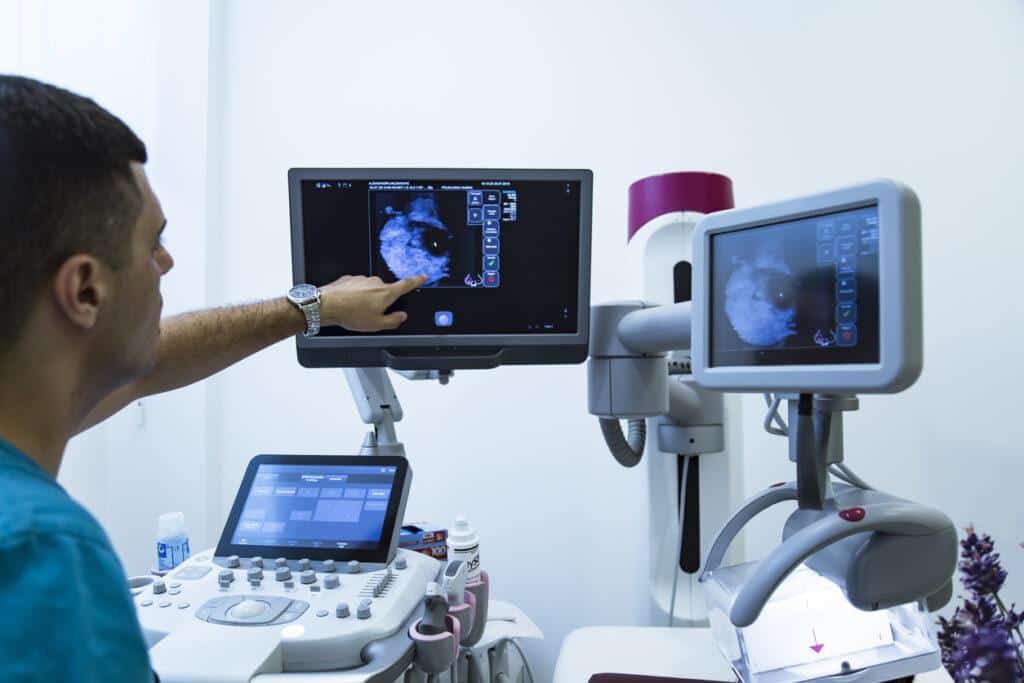Men’s breast cancer is one of the rarest cancers. The American Cancer Society (ACS) indicates that the male’s lifetime risk of breast cancer is approximately 1 in 833. For this reason, doctors mainly diagnose it at a later stage.
The best way to start early treatment and increase your chances of healing is to diagnose it during the early stages. But unfortunately, early diagnosis is not always possible since there’s less awareness among men.
Women know how to look out for changes that may indicate the presence of breast, unlike men, who have little knowledge about what and how to look for breast cancer symptoms. Therefore, men are less likely to seek help at early stages.
The other factor that leads to delayed diagnosis of breast cancer in men is that the disease affects men differently. Since men have less breast tissue than women, detecting small lumps is hard. In addition, cancer has less room for growth within the breast, making it spread faster to the surrounding tissues.
Possible Symptoms of Male Breast Cancer
You can tell that you have breast cancer if you observe the following symptoms:
- -The nipple and the surrounding area may become red, swollen, and hard
- -A hard and painless lump on the breast that doesn’t move around with the breast
- -The nipple may turn inwards, nipple retraction
- -A rush on the nipple that doesn’t go away
- -Swollen glands in the armpit
- -Nipple discharge steak with blood
The swollen glands happen if cancer spreads to the lymph nodes under your arms or around the collar bone even before the original tumor in the breast becomes large. The above changes are not always an indication of male breast cancer. However, you should seek medical attention immediately if you notice breast changes.
Risk Factors of Breast Cancer in Men
Breast cancer is mainly associated with women, but men can get it since they too have breast tissue. Male breast cancer starts when breast cells grow out of control, forming a tumor that can be felt as a lump or seen on an x-ray.
Like women, men have ducts that carry milk to the nipple and glands that make breast milk, but they are non-functional. Breast cancer usually starts in either of these two parts. In some rare cases, cancer can begin in other breast parts, such as the muscles.
Although there are risk factors that increase the risk of developing breast cancer, the exact cause of the disease remains unknown.
The risk factor includes anything that increases your chances of getting a particular disease, such as breast cancer. Having a risk factor or more doesn’t necessarily mean that you will suffer from the disease. For example, some men with more than one breast cancer risk factor do not get cancer, while others with no risk factors have developed the disease.
While it’s not yet apparent what causes male breast cancer, researchers have compiled several factors that increase the risk of getting it.

Genetics
If other blood relatives have had breast cancer, you are more likely to get it. Statistics indicate that every 1 out of 5 men with breast cancer has a close relative, male or female, who has the disease.
Age
The risk of getting breast cancer increases as you advance in age. On average, men are diagnosed with breast cancer at 72 years and above.
Inherited Gene Mutation
Mutation in the BRCA2 gene increases the risk of getting breast cancer in men. However, the risk is low at a rate of 1 in 100. In most cases, these gene defects are present in patients with family members who have had breast or ovarian cancer. But in other cases, they have been found in men with breast cancer without a strong family history.
Exposure to Radiation
The risk of getting cancer is higher if your chest area has been exposed to radiation, such as during lymphoma treatment.
Alcohol
Heavy drinking affects the liver, increasing the risk of breast cancer in men.
Liver Disease
The liver plays a vital role in balancing sex hormones. If you have liver disease, these hormones become uneven, increasing the levels of estrogen and decreasing androgens. This increases the risk of developing benign male breast growth and breast cancer.
Obesity
Obese men are at a high risk of developing breast cancer. This is because the fat cells in the body convert androgen (male hormones) into female estrogens. So when you have higher estrogen levels in the body, you are at a higher risk of developing breast cancer.
Diagnosis and Treatment
If you observe any of the above symptoms and suspect that they might result from breast cancer, talk to your physician immediately. The physician uses the same techniques used to diagnose breast cancer in women. These include:
- -Physical exam- the physician looks at your breast for change in size, shape, or symmetry
- –Mammography– the doctor takes an X-ray picture of the breast and uses the mammogram to detect early signs of breast cancer. You need to undergo regular mammograms to help identify cancer during the early stages.
- -A biopsy test involves removing a small piece of tissue from your breast and testing it under a microscope for any signs of cancer cells.
Additionally, the treatment for male breast cancer is similar to that of women. In most cases, men benefit from a combination of treatments such as:
- -Surgery- the doctor may suggest mastectomy, which removes your entire breast. In other cases, they may opt for breast-conserving surgery, which removes the tumor only. The kind of surgery you undergo depends on how severe the tumor has spread.
- -Radiation therapy- after the surgery, you will undergo radiation therapy to treat any cancer cells that the surgery might have missed.
- -Chemotherapy- the treatment method involves taking medicines orally or through injection to attack the cancer cells. You may undergo chemotherapy after the surgery to minimize the risk of cancer coming back. If you had a late diagnosis whereby cancer spread to other body parts, you might undergo chemotherapy as the primary cancer treatment.
Avoid Late Diagnosis By Scheduling Mammogram Screening
The best way to prevent male breast cancer from getting to severe levels is by diagnosing it early. A mammogram screening test helps diagnose breast cancer early when it’s easy to treat and before it’s big enough to cause any symptoms. Therefore, schedule a mammogram screening today and reduce the risk of getting male breast cancer.


